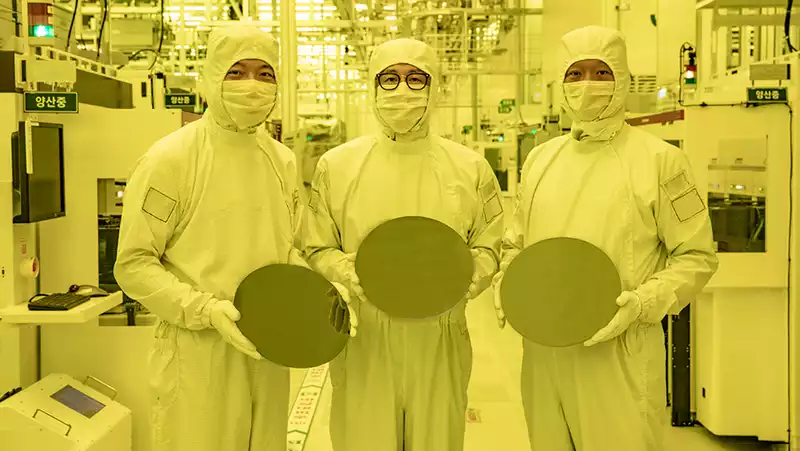When it comes to advanced semiconductor technology, there is one name that reigns supreme: TSMC. But there are other companies looking to challenge this Taiwanese giant. Intel is spending billions of dollars to increase its share of the chip manufacturing pie. Global Foundries and UMC are often cited as competitors as well. And then there is Samsung, whose name everyone knows.
Although it has not been able to compete with TSMC on the cutting edge of semiconductor manufacturing in recent years, Samsung has made no secret of its desire to challenge and overtake TSMC. Samsung and TSMC's 3nm nodes are not equivalent, but the difference is not so important if the yields are not equal, and Samsung is reportedly doing well in this regard.
According to the Korean newspaper Kookmin Ilbo (via @harukaze5719), Samsung's 3nm yield is currently in the 60% range, higher than TSMC's 55%. On the other hand, Samsung's 4nm yield is 75%, while TSMC's is 80%. This is as expected. Yields will improve as the node matures.
Recall that Nvidia's RTX 30 Ampere GPU was manufactured on Samsung's 8nm node, whereas the RTX 40 card was manufactured on TSMC's 4N node with modifications. Samsung would not have appreciated losing a customer like Nvidia. To win back large customers, they will need to compete with TSMC.
A competitive Samsung is important to gamers and consumers in general. Currently, production capacity is limited and manufacturers must compete for access to the most advanced nodes. This means that companies with large pockets can secure most of the available capacity. I look at Apple. Let's invest a few billion dollars and see what we get. [As a result, companies like AMD and Nvidia will be forced to raise the unit cost of wafers and chips.
The competition to get advanced wafers into production continues to intensify, as does the iPhone15, and the insatiable demand for AI chips. if products selling for tens of thousands of dollars apiece are prioritized, then affordable RTX 4080s, RX 7900 XTs, or other GPUs or CPUs will fall short and will be forced to pay more.
That is why it is more expedient for us to be competitive with Samsung's nodes and yields. Of course, the cost of wafers and available chips does not directly translate into higher or lower end-product prices, but there is a correlation: if AMD, Nvidia, and Intel really want to capture a share of the gaming market, they can make some margin.
On the GPU front, the dream is for the Nvidia RTX 50, AMD RX 8000, and Intel Arc A800 (or whatever name they end up being called) to become competitive in performance and manufacturing processes. When that happens, faster, more affordable products for gamers may emerge, and proper price competition may ensue.
The same basic point applies to CPU manufacturing. The transition to chiplet or tile architectures is well underway, meaning that competitive Samsung will have to deal with the reality that TSMC no longer has a monopoly on state-of-the-art chip manufacturing capabilities.
"Making Pennies on Cheap Chips" ...... but we can dream. It starts with competition from TSMC. Samsung is not making inroads anywhere, but they need to compete head-to-head with TSMC in the big leagues.


Comments